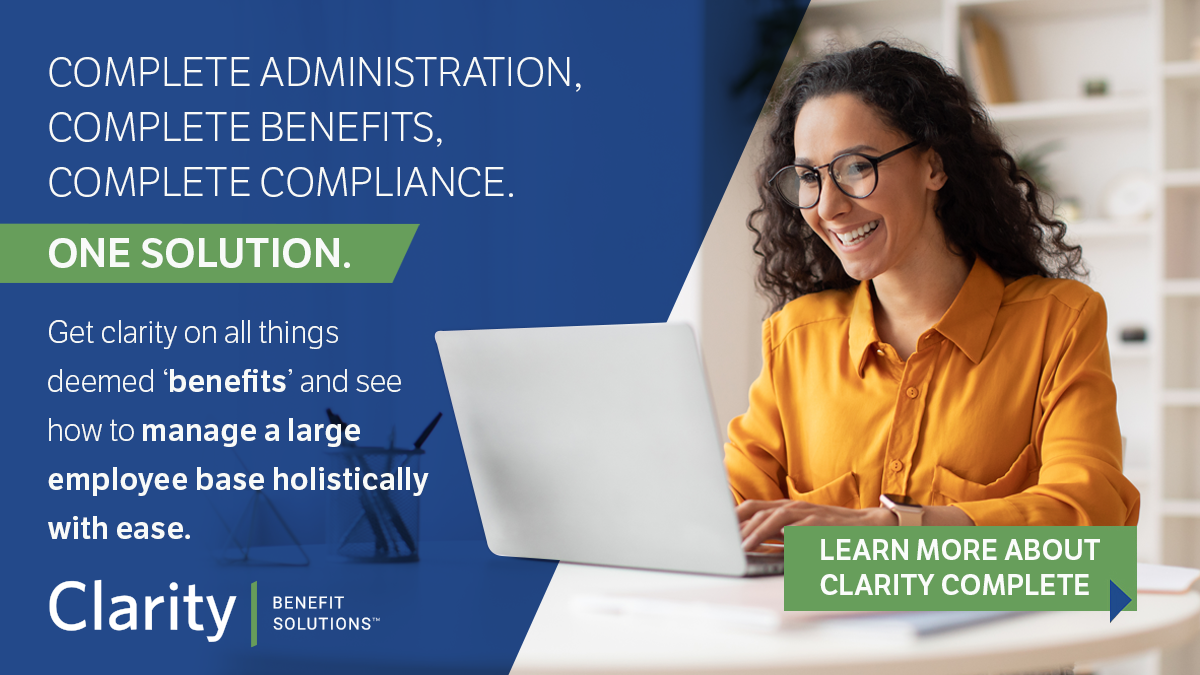
Providing quality compensation is an essential way to attract and retain valuable talent, and employee benefits packages are a huge part of that. However, many employers do not develop and implement the proper employee benefits plan strategies for their employees. Recent LIMRA research shows that approximately 70% of employers believe their current benefits plan meets their employees’ needs—but only half of employees are actually satisfied with their benefits packages.
This means brokers can directly help their clients attract and retain quality talent by taking the time to consult with each employer and provide specific benefits plans and strategies to fit their needs. Here are the steps you should take to develop a highly strategic employee benefits plan for each client, exceed their expectations and, in turn, win more accounts with our benefits strategy examples.
Step 1: Identify the Client’s Benefits Objectives
Consult with each client and identify their company’s benefits-related objectives. This will give you insight into their employees’ needs and the company as a whole. These objectives tend to be guided by business and HR strategies and goals. Employer size, location, industry, and any collective bargaining agreements in place will all factor in as well.
Keep in mind that your clients’ objectives will probably change as their strategies evolve, so it’s important to revisit and revise them periodically.
As you’re determining a client’s objectives, it’s imperative to consider their available budget as well. If they already have a particular benefits plan, you can analyze it and evaluate the annual benefits costs. Or, if they don’t currently have a type of plan, you can create quotes for a variety of funding strategies and devise a budget from there.
Step 2: Figure out the Employees’ Needs
This step can take some time because it potentially involves personal employee interviews and questionnaires, a review of the current benefits plan, and an evaluation of the client’s competitors’ benefits practices. By finding out employees’ needs directly from the source, you increase the likelihood that they will actually enroll and find value in the plan you create.
It's also important to help your client analyze their employee demographics. For example, there are currently five different generations in the workforce. The divide between employee needs is growing, and employers need to keep up in order to attract the best possible talent in every age range.
Once you’ve worked together to determine the basic demographics of a client’s employees, you can then help build a benefits plan that spans the needs of older and younger generations. Older employees tend to be drawn to traditional benefits like disability coverage and retirement income plans, while younger employees prefer paid parental leave and education benefits. However, all generations tend to agree that things like quality health insurance, paid vacation and life insurance are the most important offerings and show employee appreciation. The process of getting to know your client’s needs helps create a relationship and shows you have an interest in their success, not just your own.
Step 3: Consider Legislation
Lastly, before creating the benefits plan; consider any legal obligations the client may have, including those related to the Affordable Care Act. The ACA is complex, and it’s important for brokers to provide a hands-on approach to helping their clients understand its requirements.
Step 4: Create the Benefits Plan
As you’re creating the benefits plan, evaluate the cost of every offering in order to stay on budget. Help each client determine where costs can be reduced, which benefits will be the most valuable and which may not get used, whether employees will need to contribute, and if so, how much, and which non-traditional benefits options to offer.
Promoting ancillary and voluntary benefits will give the client a more robust offering and allow you to sell more lines of coverage.
Step 5: Communicate with your Client
All of these steps would be for nothing if employees don’t enroll. Go beyond the necessary communications regarding legal compliance and disclosure of the plan summary. Set aside time and resources to educate the employees on every available benefit option using relatable examples. Benefits plans can be hard to grasp, and by making them easier to understand, you are giving your client’s employees a better opportunity to choose the right plan.
Ensure the employees are aware of the new options, eliminated options, how the offerings can benefit them personally, and how to use them properly. Effective communication with your client and their employees will help their employees understand the benefits plan and increase buy-in.
Step 6: Periodically Evaluate the Plan
Review every client’s benefits plan on a regular basis to determine whether it is continuing to meet the employees’ needs as well as the client’s company objectives. Work with your clients to develop goals assessing the effectiveness of their plan and keep lines of communication open to answer any questions they may have.
The economy, employee needs, and regulations are all constantly changing, so it’s important to stay on top of every plan and offer support and consultation whenever needed.
Brokers who provide high-quality service, go above and beyond their clients’ expectations, and develop strategic employee benefits plans will win more accounts. Using innovative benefits solutions will help streamline the process and make it much easier to communicate with clients regularly. By leveraging benefits software and benefits technology as a selling tool, you can offer your clients increased compliance, automation, and engagement. The right benefits software can also offer automated alerts and reports to keep you updated and give you the opportunity to face potential problems before they even arise.
Clarity Benefit Solutions is dedicated to helping you grow and succeed in today’s competitive landscape. We can help you build your business by winning more accounts, as well as helping you retain your current ones for years to come. To learn more about how we can help you grow your business, visit our broker page today.
Sources:
https://www.erieri.com/dlc/onlinetextbook/employee-benefit-programs
https://www.shrm.org/resourcesandtools/hr-topics/benefits/pages/benefitsbrokers.aspx
https://www.benefitspro.com/2018/04/23/developing-strategic-benefits-will-help-your-clien/
https://www.limra.com/Research/Abstracts_Public/PDF/2018/180514-02-IG.aspx?research_id=10737456947
